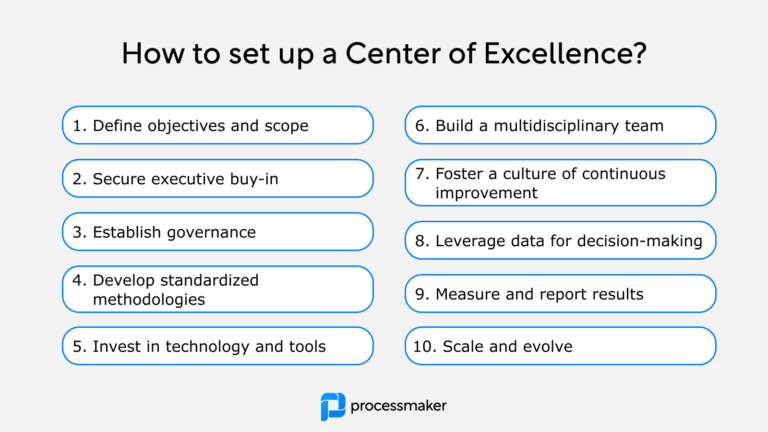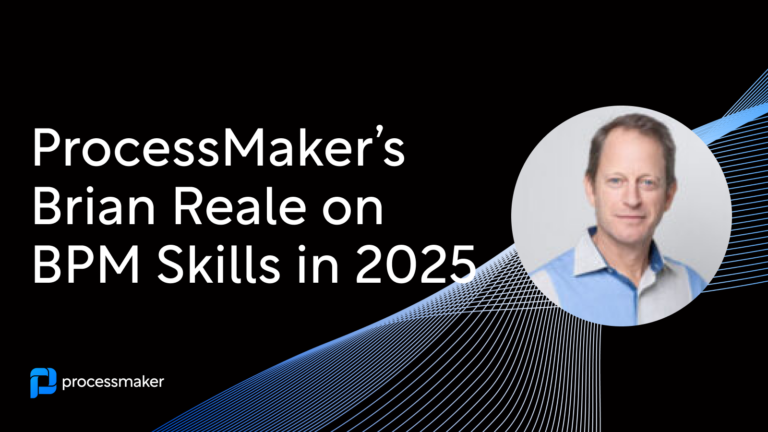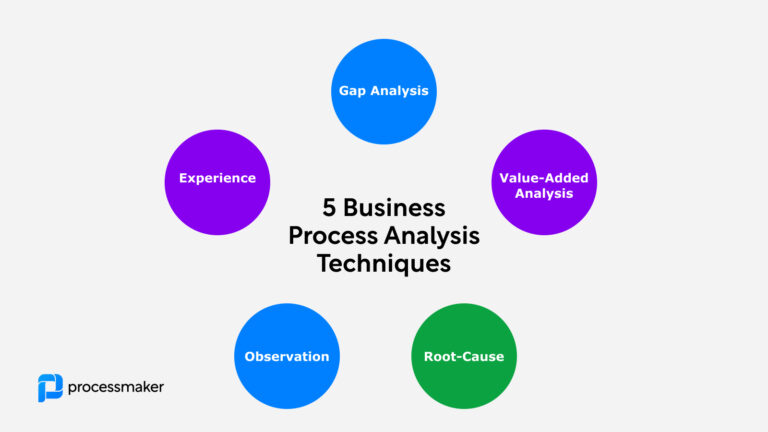In the term “headless BPM platform”, head refers to the front-end or user interface (UI) generated by the BPM platform or frameworks that are tightly coupled to the back-end. This type of architecture is the default for most BPM solutions.
However, a tightly-coupled front-end and back-end can lack flexibility in terms of interfacing with various systems. When a platform is headless, no specific UI is presented to end-users – it separates the user interface from the back-end. You only use the process server to execute process flows without the UI.
To explain further, the processes are not rendered by the UI. Instead, there lies a distinct separation of responsibilities where the operation is deferred to the end-user application. The processes are managed through an API or web service that can execute via different devices, and these other devices can present a UI in multiple ways. Essentially, headless BPM provides process execution as a service. Even though a process may deploy once, it can be shown numerous times and in different ways.
The main benefit of a headless BPM software is eliminating a rigid front-end UI that is hindering process execution. Front-end developers can create the UI of their choice that is most relevant to the end-users.
Why use a headless BPM solution?
An organization may opt for a headless BPMS for one of several reasons:
- When BPM workflows do not require human intervention.
- The client portal has already developed its preferred existing UI layer.
- To embed an existing UI page, a JSP in an iFrame in a coach.
- A mobile business app already has the UI for the BPM process application.
Benefits of Using a headless BPM platform
A headless BPM platform can provide many business advantages. It proves useful when automating repeatable tasks that have pre-defined outputs. It also shifts responsibility from the end-user to the API. Other major benefits may include:
- Front-end developers gain freedom from the back-end since they can use their native tools to take full control of the user interface.
- The back-end process is streamlined while display logic is shifted to the client-side.
- Developers can create more relevant and engaging user experiences if preferred. Freedom of innovation means determining what works for the business.
- Distributing visibility across various platforms from one back- end means less time is spent delivering the same reports.
- More freedom of choice with the front-end.
- Since the back-end and front-end are separated, you can scale without risk to performance.
Evaluating whether going headless is right for your organization
Despite all the advantages, a headless architecture may not make sense for your organization. Discovery questions to consider may include:
- Do the your end-users require multiple touchpoints?
- Does the organization prefer a modern tech stack for managing business processes?
- Is management centralized?
- Do front-end developers require flexibility to innovate?
If you answered “yes” to any of these questions, then a headless BPMS is indispensable for your business processes.
Three categories of headless BPMS
Tightly coupled
With a traditional BPM platform, the front-end and back-end are tightly coupled. The UI is generated by the back-end and created directly in the source code. Historically, many BPM platforms are tightly coupled with limited flexibility around UI customization.
Fully headless
A fully headless BPM solution means it does not have a built-in UI, and by design, is API-only. For instance, all business functions are deployed by REST endpoint APIs. So then, a fully headless BPMS would support any device where a front end can be made, and it can integrate with a third-party UI as well.
“Fully headless” does offer the most flexibility in terms of how you can build it out and what languages, technologies, and tools you want to use. However, the costs, technical expertise, and maintenance required must be reviewed.
Hybrid headless
A hybrid headless BPMS is a mix between a tightly-coupled BPMS and fully headless BPMS. The hybrid headless BPMS variety offers a UI and a complete API so that they can be fully headless if preferred. Even with a UI, the APIs are integrated and functionally complete. A hybrid headless BPMS presents the best of both worlds where you can use the built-in UI or use APIs to create your own.
However, there are some challenges with headless BPM platforms including:
- Requiring two times the effort and deployment of BPMS and a custom UI.
- Additional efforts are needed around authentication, authorization, and SSO.
- Multiple versions must be supported and maintained, such as the old instance on the old version and the new instance on the new version.
In Summary
Below is a short recap of headless platform benefits:
- Offers complete visibility for all processes to improve collaboration.
- Synchronized and real-time data analytics for improving business processes.
- Increase efficiency with a federated view for managing work, monitoring performance, and executing tasks.
Headless offers an end-user experience that is both flexible and customizable via APIs. Headless also offers more personalization and scalability, which can be key in more advanced solutions such as intelligent business process management suites (iBPMS). The key is to choose the right UI per channel and per device. The objective should be to use an architecture that provides the greatest flexibility without overwhelming constraints around maintenance.





